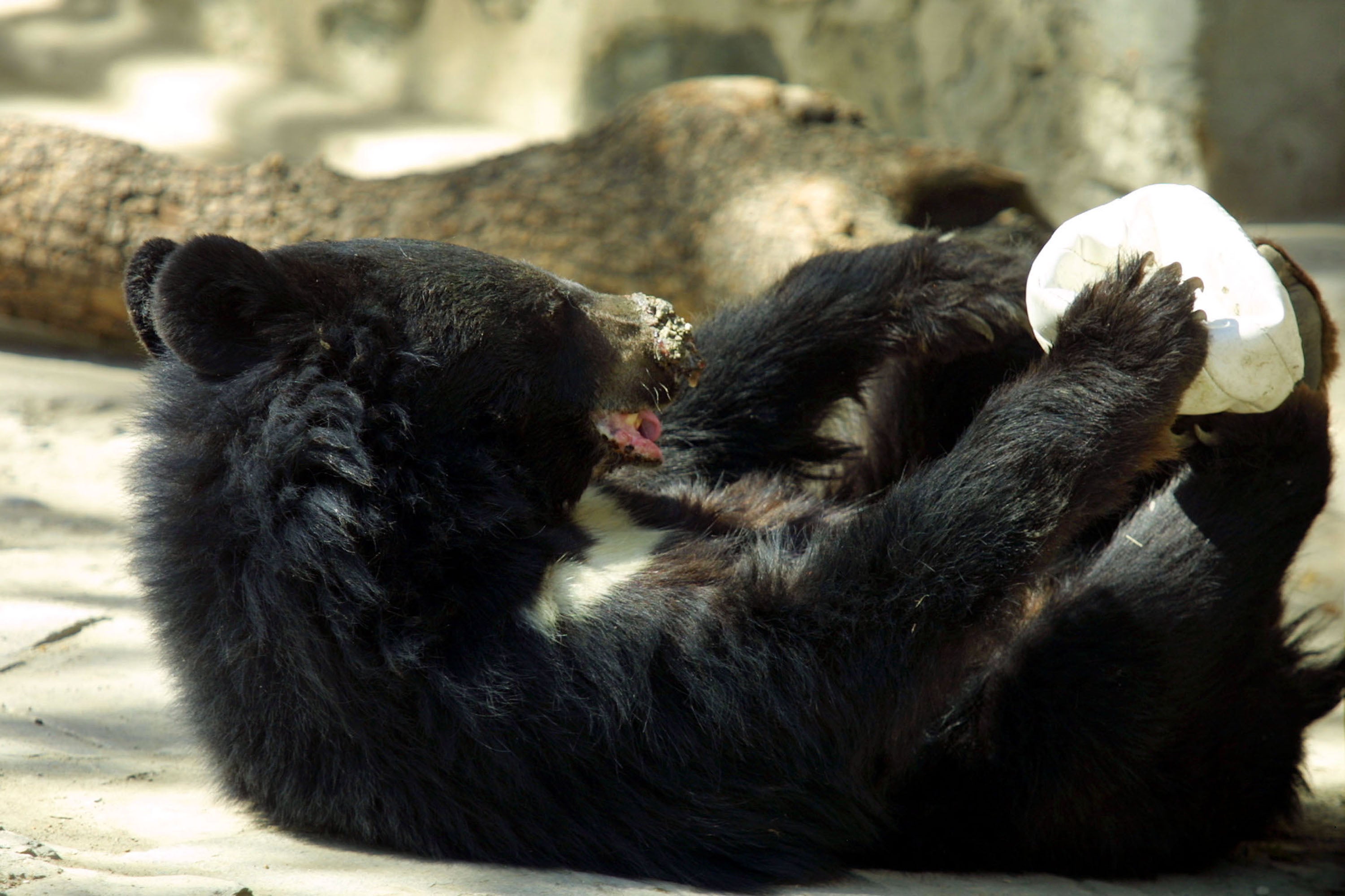- Asia
- India
Forests in the Himalayan state report a surge in maulings as officials warn of shifting bear behaviour
Namita SinghSaturday 22 November 2025 09:14 GMTComments
 CloseRelated video: India: Wildlife encroaches on urban spaces as bear makes daring entrance into hotel reception room
CloseRelated video: India: Wildlife encroaches on urban spaces as bear makes daring entrance into hotel reception room
On The Ground newsletter: Get a weekly dispatch from our international correspondents
Get a weekly dispatch from our international correspondents
Get a weekly international news dispatch
 Email*SIGN UP
Email*SIGN UPI would like to be emailed about offers, events and updates from The Independent. Read our Privacy notice
A series of violent encounters between Asiatic black bears in the Himalayan state of India has prompted officials to impose emergency rules, including authorising lethal force in extreme circumstances.
At least five people have been killed in Uttarakhand bear attacks this year, according to figures reported by The Indian Express, citing forest department officials.
The number marks the highest annual toll since 2016. Attacks have also left scores injured and caused extensive livestock losses in remote mountain villages that rely heavily on cattle for subsistence.
The crisis has unfolded during the pre-hibernation period, when bears typically gorge on food before retreating to higher altitudes for the winter.
Officials say changing weather patterns have disrupted this behaviour. Warmer temperatures, delayed snowfall and shrinking food availability are believed to be keeping bears active for longer and pushing them closer to human settlements in search of food.
 File. Asiatic Black Bear (Getty Images)
File. Asiatic Black Bear (Getty Images)RK Mishra, Principal Chief Conservator of Forests, Wildlife, attributed the unusual aggression to climatic shifts. “This year, there has been very little snowfall in the high-altitude regions, and winter arrived late. Normally, bears hibernate by early November, but the lack of snow and scarcity of food are keeping them active, leading to increased restlessness and aggression,” he told The New Indian Express.
In Chamoli district, a woman who was seriously injured in a bear attack while collecting grass was airlifted to the All India Institute of Medical Sciences (AIIMS) in Rishikesh, reported the Press Trust of India.
Doctors said she lost her left eye and suffered partial loss of vision in her right eye. According to officials, she had lain undiscovered for nearly 24 hours on a steep forested slope before being rescued.
Elsewhere in the Garhwal region, villagers have reported cattle pens being raided repeatedly at night.
In the Paithani range of Pauri district, officials said more than 45 cattle had been killed within three months.
Divisional Forest Officer Abhimanyu Singh said at least four bears were moving through the area, making it difficult to identify which animal was responsible for individual attacks.
Mr Singh had earlier been granted permission to first attempt capture using cages and, if those efforts failed, to tranquilise the bear. In what he described as only a last resort, officers were authorised to kill the bear within a 15-day window if no alternative worked.
The state has now circulated updated guidelines for dealing with human–bear conflict during winter. Officials have been told to identify areas where bears have recently been sighted, step up night patrols and carry tranquillisation kits, protective equipment and rescue cages.
Only an authorised veterinarian can sedate a bear. Communities have been advised to avoid forests in the early morning and evening, when encounters are more likely, and to improve waste management, as open rubbish dumps attract wildlife.
Longer-term measures include planting native species such as oak, kafal and wild berries inside forest areas to improve natural food availability, and strengthening training for field staff.
The department has also instructed district units to prepare conflict-management plans adapted to local terrain and seasonal patterns.
Across Uttarakhand, the Himalayan black bear – a subspecies found in India’s north and ranging between 1,200m and 3,300m (3,900–10,800ft) in altitude – has been sighted in protected reserves as well as near towns such as Gopeshwar, Mussoorie, Chakrata and Pithoragarh.
Bears have also been seen foraging in rubbish heaps around urban edges, a pattern experts link to disrupted food cycles. In some villages, attacks have become so common that forest officers have begun escorting schoolchildren to ensure they can travel safely.
Climate specialists and wildlife biologists say the unusual aggression and increased movement may reflect both habitat degradation and global warming.
Reduced snowfall shortens the hibernation period, meaning bears remain active when food in the wild is most scarce.
The loss of wild berries and native fruits has also been noted across several other countries, including Japan and Canada, where similar conflicts are rising.
Camera-trap images from Paithani recently showed four or five different bears frequenting the same forest edge, raising concerns about a growing local population. Wildlife behaviour experts say the concentration of bears in shrinking habitats heightens the risk of encounters.
More about
UttarakhandHimalayanIndianJoin our commenting forum
Join thought-provoking conversations, follow other Independent readers and see their replies
Comments



